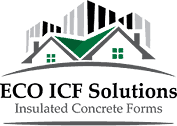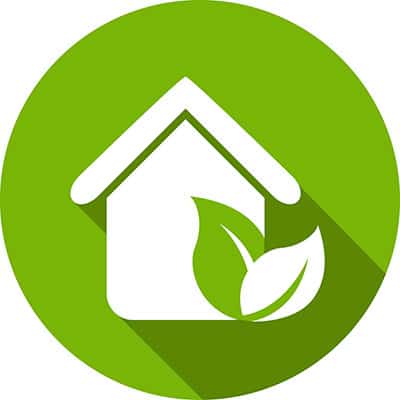House Dutiful
26 September 2006By Daniel A. Shaw
In and around Aspen, Colo., incorporating green into the building process usually means wondering, “How much cash can I spend on my house?” After all, this valley sports some of the most energy-sucking but least-used second, third, and fourth homes on Earth.
One of them, former Saudi Ambassador Prince Bandar Bin Sultan’s 55,000-square-footer, can be yours for $135 million. What are the utility bills? Who the hell cares! Spec homes topping 15,000 square feet are still popping up without a solar panel in sight in a place where the sun shines 300 days a year.
When we decided to build a new house on our property in Woody Creek, a few miles but a world away from Aspen, we knew we were engaging in inherently anti-environmental behavior, so we decided to go as green as we could. We were going to be straw-bale insulated, gray-water recirculating, solar-powered leprechauns. On the grid, but only so we could give power back to it.
Um, that was before we started building. After six months of design and a year and a half of construction, we’re a few months away from moving in. And what we’ve learned from all this is that green has many shades.
The Road From There to Here
When I met my wife in 1999, I didn’t know Woody Creek from Woody Guthrie. But I soon came to love both her and the funky community where she had a little cabin just over the hill from Hunter S. Thompson. When we cashed in on our apartment in Manhattan and decided to move here full-time two years ago, we knew immediately that we wanted to build a new, green house and keep the cabin as guest quarters to entice our abandoned friends to visit.
We wanted to minimize the negative impacts on our land, water, air, and selves, but we didn’t want to live in a yurt. We like hot water, warmth, electricity — those kinds of things — and we like them in abundance.
We found a local architect, Doug Graybeal, who’d recently left a major local firm to build only green projects. We were to be his first solo project other than his own home.
And when we said we wanted a Moroccan-tinged, Japanese-influenced, sort of Scandinavian, Colorado mountain house — oh yeah, and make it green — he nodded and agreed to work with us. Our contractor, Structural Associates, had never built a green house. In fact, they’re well known in these parts for building some monster homes, including our neighbors’. But they wanted to diversify, and were willing to research and source materials and get up to speed on their own time and their own dime.
That impressed us a lot more than the dudes from Telluride who said the most important thing on their job sites was for everybody to have a good time.
Building green has three components — energy efficiency, eco-friendly materials, and indoor health — that often don’t mesh. Prioritizing those components is what led us down the green color spectrum.
Once our design was more or less done, we decided to find an environmental consultant to lab test our potential building and finishing materials and dig up information on them in scientific and anecdotal reports from around the world. Big mistake. This consultant painted an Amityville Horror scenario.
Forget blood coming out of the walls: The walls themselves and almost every material we’d selected — even those deemed safe by various agencies — had the potential to poison us through off-gassing. So what did we do? We fired the consultant and found one with a slightly more forgiving outlook. We could build the house we wanted, after all, and survive in it for at least a few years. Compromise No. 1.
Our house is exposed, and we wanted wood siding. Reclaimed wood, of course. That nixed straw-bale insulation, because apparently the only guy in the world who can successfully attach wood siding to straw-bale walls lives in New Zealand. We decided to spend the money elsewhere, not on flying the Kiwi back and forth. So much for our utopian vision of getting all our friends to come stack straw bales in what has become the equivalent of a modern-day barn-raising in these parts. Compromise No. 2.
We decided to go with panels made from compressed wheatgrass. Those, said Graybeal, work great with wood siding. One problem, though. The glue used to attach the panels to the siding is toxic. Really toxic. We ended up using ECO-Block, a recycled Styrofoam product that, while lower down on the green scale, still let us feel good. And those who aren’t in this to feel good are fooling themselves. Compromise No. 3.
Water is gold in the West, and in Woody Creek we live in constant fear of drought, fire, and the sprawling Front Range near Denver, which poaches vast quantities of our most precious resource. We figured we’d do our part to conserve (in addition to low-flow toilets and water-saving appliances) by installing a system to reuse wastewater for irrigation. Not so fast, said Pitkin County. Not unless we were willing to put in what amounted to a commercial water-treatment plant and a second set of plumbing to handle the wastewater. Not in our budget. Compromise No. 4.
How Stuff Works
So, what are we left with that makes us green? For starters, we have an incredibly energy-efficient house. At its core are two 30-foot-high, two-foot-thick CMU (concrete masonry unit) walls that run almost the length of the house and will work to both heat and cool it.
(My mountaineering brother-in-law desperately wants us to turn one of them into a climbing wall, but that’ll be tough with the art in the way.) That concept of thermal mass is an ancient one, and we’ve updated it by installing ducts in the walls to move warm and cool air through them. Concrete floors and radiant heat will help ensure we use as little heat as possible.
We’ll rely partly on passive solar year-round, but we’ve installed a massive photovoltaic solar-panel system that should supply 85 percent of the house’s energy needs on any given day. Geothermal energy pulled off our pond will augment the solar power. We’re also working with our electrical contractor to eliminate phantom loads (essentially electricity leaks when devices are on “standby” mode) in all appliances and our audio/TV systems.
We’ve also used eco-friendly, healthy materials wherever it was practical. Virtually all the wood in our house is either reclaimed or certified renewable. The siding came from a barn torn down in Nova Scotia. Our beams were cut from Sitka spruce logs salvaged from a blowdown in British Columbia. We’re using certified bamboo floors throughout, and our plywood comes certified renewable and toxin-free by the only supplier of such plywood in the country.
All wood for decking, cabinets, and doors is certified renewable. Our roof is completely recyclable metal, with one portion of sod, and we’re using clay-based plaster on our CMU walls. We used locally quarried stone for the base of the house to reduce transport needs.
Needless to say, all of these green elements made the house much more expensive than it otherwise would have been. It’s made us realize how great the need is for affordable green building materials and alternative-energy systems. For example, we needed some odd pieces of mahogany to finish framing a door.
Regular mahogany: $200. Certified renewable mahogany: $1,200. Our solar panels will pay for themselves in about 10 years. We’re only able to build this house because we hit the real-estate jackpot in Manhattan.
We’re supposed to move into this great experiment in late November. If nothing else, our infant son will move from our closet, where he sleeps now, to his own room; our four-year-old daughter will have plenty of space to keep her stuff away from her baby brother; and our insane dog can make weird noises at night somewhere far from us.
Will we be as efficient and produce as much solar energy as we hope? We won’t know until we get in there. But just a few days ago, Ken Olsen, who designed our photovoltaic system, hooked it up to provide electricity to the construction site. I feel pretty damn green standing in front of our electricity meter, watching us put power back on the grid.
Click here for more information.

